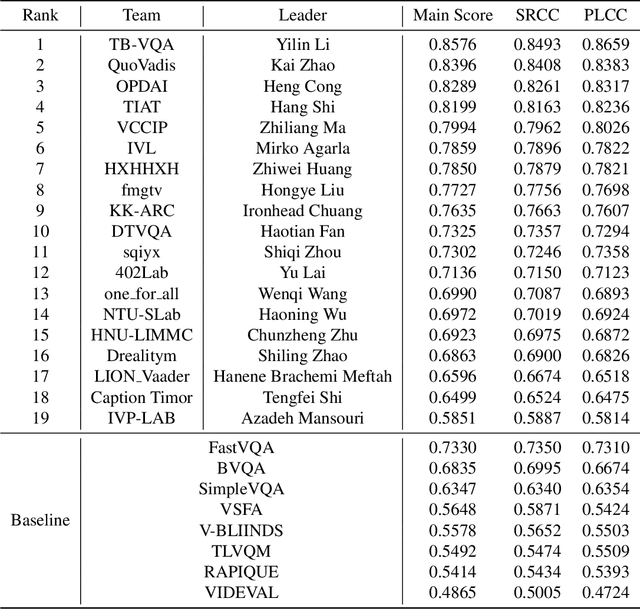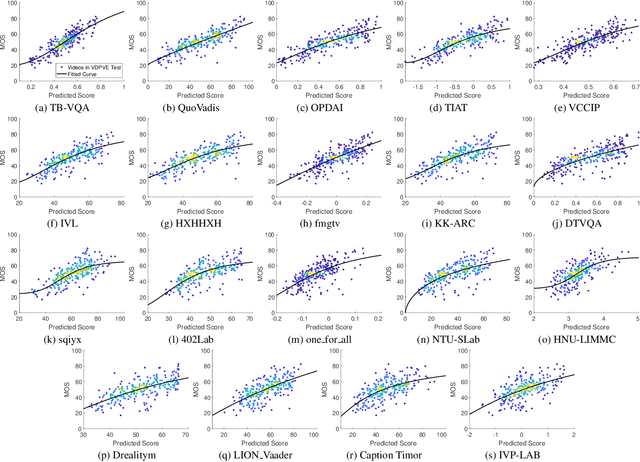Haibing Yin
Progressive Depth Decoupling and Modulating for Flexible Depth Completion
May 15, 2024Abstract:Image-guided depth completion aims at generating a dense depth map from sparse LiDAR data and RGB image. Recent methods have shown promising performance by reformulating it as a classification problem with two sub-tasks: depth discretization and probability prediction. They divide the depth range into several discrete depth values as depth categories, serving as priors for scene depth distributions. However, previous depth discretization methods are easy to be impacted by depth distribution variations across different scenes, resulting in suboptimal scene depth distribution priors. To address the above problem, we propose a progressive depth decoupling and modulating network, which incrementally decouples the depth range into bins and adaptively generates multi-scale dense depth maps in multiple stages. Specifically, we first design a Bins Initializing Module (BIM) to construct the seed bins by exploring the depth distribution information within a sparse depth map, adapting variations of depth distribution. Then, we devise an incremental depth decoupling branch to progressively refine the depth distribution information from global to local. Meanwhile, an adaptive depth modulating branch is developed to progressively improve the probability representation from coarse-grained to fine-grained. And the bi-directional information interactions are proposed to strengthen the information interaction between those two branches (sub-tasks) for promoting information complementation in each branch. Further, we introduce a multi-scale supervision mechanism to learn the depth distribution information in latent features and enhance the adaptation capability across different scenes. Experimental results on public datasets demonstrate that our method outperforms the state-of-the-art methods. The code will be open-sourced at [this https URL](https://github.com/Cisse-away/PDDM).
Quality-aware Selective Fusion Network for V-D-T Salient Object Detection
May 13, 2024Abstract:Depth images and thermal images contain the spatial geometry information and surface temperature information, which can act as complementary information for the RGB modality. However, the quality of the depth and thermal images is often unreliable in some challenging scenarios, which will result in the performance degradation of the two-modal based salient object detection (SOD). Meanwhile, some researchers pay attention to the triple-modal SOD task, where they attempt to explore the complementarity of the RGB image, the depth image, and the thermal image. However, existing triple-modal SOD methods fail to perceive the quality of depth maps and thermal images, which leads to performance degradation when dealing with scenes with low-quality depth and thermal images. Therefore, we propose a quality-aware selective fusion network (QSF-Net) to conduct VDT salient object detection, which contains three subnets including the initial feature extraction subnet, the quality-aware region selection subnet, and the region-guided selective fusion subnet. Firstly, except for extracting features, the initial feature extraction subnet can generate a preliminary prediction map from each modality via a shrinkage pyramid architecture. Then, we design the weakly-supervised quality-aware region selection subnet to generate the quality-aware maps. Concretely, we first find the high-quality and low-quality regions by using the preliminary predictions, which further constitute the pseudo label that can be used to train this subnet. Finally, the region-guided selective fusion subnet purifies the initial features under the guidance of the quality-aware maps, and then fuses the triple-modal features and refines the edge details of prediction maps through the intra-modality and inter-modality attention (IIA) module and the edge refinement (ER) module, respectively. Extensive experiments are performed on VDT-2048
NTIRE 2023 Quality Assessment of Video Enhancement Challenge
Jul 19, 2023



Abstract:This paper reports on the NTIRE 2023 Quality Assessment of Video Enhancement Challenge, which will be held in conjunction with the New Trends in Image Restoration and Enhancement Workshop (NTIRE) at CVPR 2023. This challenge is to address a major challenge in the field of video processing, namely, video quality assessment (VQA) for enhanced videos. The challenge uses the VQA Dataset for Perceptual Video Enhancement (VDPVE), which has a total of 1211 enhanced videos, including 600 videos with color, brightness, and contrast enhancements, 310 videos with deblurring, and 301 deshaked videos. The challenge has a total of 167 registered participants. 61 participating teams submitted their prediction results during the development phase, with a total of 3168 submissions. A total of 176 submissions were submitted by 37 participating teams during the final testing phase. Finally, 19 participating teams submitted their models and fact sheets, and detailed the methods they used. Some methods have achieved better results than baseline methods, and the winning methods have demonstrated superior prediction performance.
Fast QTMT Partition for VVC Intra Coding Using U-Net Framework
Apr 06, 2023Abstract:Versatile Video Coding (VVC) has significantly increased encoding efficiency at the expense of numerous complex coding tools, particularly the flexible Quad-Tree plus Multi-type Tree (QTMT) block partition. This paper proposes a deep learning-based algorithm applied in fast QTMT partition for VVC intra coding. Our solution greatly reduces encoding time by early termination of less-likely intra prediction and partitions with negligible BD-BR increase. Firstly, a redesigned U-Net is recommended as the network's fundamental framework. Next, we design a Quality Parameter (QP) fusion network to regulate the effect of QPs on the partition results. Finally, we adopt a refined post-processing strategy to better balance encoding performance and complexity. Experimental results demonstrate that our solution outperforms the state-of-the-art works with a complexity reduction of 44.74% to 68.76% and a BD-BR increase of 0.60% to 2.33%.
 Add to Chrome
Add to Chrome Add to Firefox
Add to Firefox Add to Edge
Add to Edge